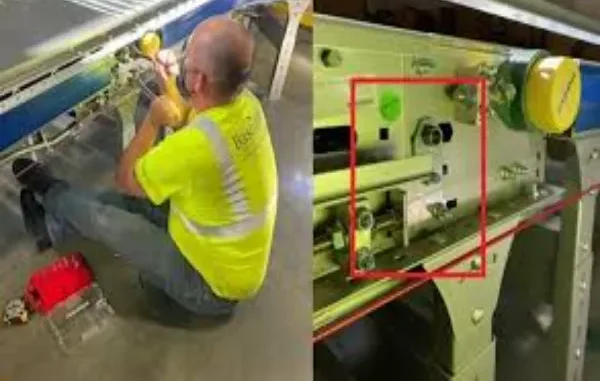

Belt conveyors are essential in different fields. They allow easy and speedy movement of goods from one place to another. For manufacturers, warehouses, and even airports, this is essential. However, a broken belt conveyor can cause delays and harm goods. How, therefore, can you ensure flawless belt conveyor performance?
The answer is simple: use the proper techniques to maintain efficient belt conveyor operation. Correct load distribution, adequate belt alignment, and frequent maintenance are the keys. These steps can increase efficiency and help prevent problems.
This article will cover belt conveyors’ usual uses, three significant tips for perfect operation, and their features.
These concepts will help businesses save time and money.
What Are Belt Conveyors?
A belt conveyor is a system that moves materials using a long belt. The belt is stretched between two or more pulleys. One pulley moves the belt, and the other keeps it in place. The moving belt carries items from one point to another. This system is simple but very effective.
Belt conveyors come in many kinds and sizes. Some are short and used in limited areas, while others are lengthy and carry commodities across great distances. Belt conveyors are valuable in many fields since they can move everything from large rocks to small packages.

Uses of Belt Conveyors
Belt conveyors are used in different fields to ease work. Typical uses for them are:
- Factories and Warehouses: Belt conveyors help manufacturers and warehouses move products from one machine to another. They also move goods to storage spaces, lessening the need for workers to move large goods.
- Airports: They help reduce travel waiting times by moving bags from check-in facilities to aircraft and from aircraft to baggage claim sections.
- Mining and Construction: Belt conveyors transfer coal, sand, and gravel, among other heavy items, in mining and construction, increasing workplace safety.
- Food Industry: They deal with food products throughout manufacturing and packing. This maintains hygiene and promotes efficiency.
- Retail Stores: Supermarkets move goods for scanning and bagging using tiny belt conveyors at checkout stations.
Since belt conveyors are so important, they must be kept in good condition. Here are three tips to help ensure smooth operations.

1. Perform Regular Maintenance
Regular maintenance is essential to keeping a belt conveyor running smoothly. Like a car, belt conveyors require routine inspections and repairs, which help prevent failures and preserve efficient system operation.
A belt wear-and-tear checkup is part of maintenance. If the belt is too slack or shows cracks, it should be changed or tightened. Lubricating moving parts is another critical task. If the pulleys and rollers are dry, friction can impair the belt or slow down operations.
Cleaning is also an essential part of maintenance. Dust, dirt, and debris accumulate on the belts and rollers, causing blockages. A dirty conveyor system could impair product quality, especially in the food industry. Keeping a clean belt helps prevent several problems.
Frequent maintenance helps companies avoid unneeded issues, increasing production and reducing downtime. Over time, a well-maintained conveyor system also helps save money and extend its lifespan.
2. Ensure Proper Belt Alignment
Belt alignment guarantees the belt runs on a suitable path. Should the belt be misaligned, it could slide off the track or move irregularly, damaging the belt and slowing down procedures.
Observing the belt run will enable you to determine its alignment. If it is tipping one side, it could have a problem. Several reasons for misalignment could be unequal loads or worn-out rollers. Solving this will depend on changing the rollers and tightening the belt.
Install tracking instruments, too; that is vital. These instruments support correct posture and help keep the belt in place. If the belt veers off course, the gadget automatically changes direction, reducing the damage risk and ensuring perfect functioning.
Misplaced belts also cause material spillage. Products off the belt could create clutter and lead to losses. Correcting early alignment problems helps preserve safe and efficient operations. Thus, companies should routinely examine belt alignment to avoid more significant issues.

3. Distribute Loads Correctly
A belt conveyor runs perfectly depending on suitable load distribution. It could become unbalanced if a belt tilts too much toward one side. This may lead to belt misalignment, increased wear, and even breakdowns.
Laying materials equally on the belt will help prevent this. Workers should avoid dumping everything in one spot. Instead, they should spread the load across the entire width of the belt. This reduces too much tension on one side and maintains balance.
Another trouble is overloading the conveyor. If the belt weighs more than it can handle, it may stop or slow down running, compromising the motor and other parts. Therefore, one should consider the weight limits the manufacturer suggests.
Proper loading techniques are also helpful. Installing chutes or guides helps ensure the perfect material direction on the belt, reduces the influence and prevents sudden tension.
Good load distribution enables businesses to boost productivity and reduce system failure risk. This prolongs the conveyor system’s lifetime and maintains its mechanisms’ flawless performance.
Conclusion
Belt conveyors are used in many fields, so it is crucial to keep them running without faults. Regular maintenance, adequate belt alignment, and proper load distribution are essential to ensure efficiency. These rules help companies increase output and prevent costly failures.
Maintaining a belt conveyor system ensures timely commodities movement, saves time and money, and improves safety. Keeping belt conveyors is a long-term maintenance expenditure that pays off. Applying these basic ideas will help companies achieve faultless operations without issue.
Leave a Reply